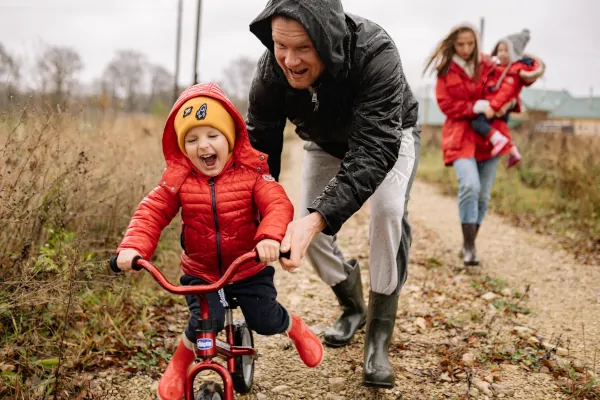Toddlers, those adorable little bundles of energy, are perpetually in motion, waddling, crawling, and taking their first wobbly steps into the great, wide world. Daily mobility is not just a cute feature of childhood but a crucial aspect of your toddler’s overall development. As parents, guardians, and educators, it’s imperative that we understand the significance of movement during this formative stage and how to foster it in a safe, supportive environment.
This comprehensive guide for parents of 2 to 5-year-olds will illuminate the importance of mobility in the early years and provide practical tips on how to enhance and encourage it. Ready to take a few steps forward for your little one’s future? Read on.
Understanding Toddler Mobility
Children go through a rapid phase of physical development from the age of 2. Mobility skills such as crawling, cruising, and walking are essential for their growth and independence. Here’s a quick overview of the key stages and their impact:
Crawling
Crawling is not just a way to get around; it also supports the development of hand-eye coordination, perceptual skills, and even reading readiness. It allows toddlers to explore their environment in three dimensions, encouraging spatial awareness and problem-solving.
Cruising
As your child begins to pull up to a stand and move along furniture, they are developing strength and balance that is crucial for walking. These early cruising steps are significant in refining the gross motor skills and laying the foundation for later activities.
Independent Walking
Those first unaided steps are celebrated for good reason. Walking upright helps strengthen muscles and bones, improves circulatory and digestive systems, and most prominently, sets the stage for broader exploration and learning.
Creating a Toddler-Friendly Environment
It’s not just about the milestones; it’s also about the path. Your home environment plays a significant role in encouraging safe and free movement. Consider these aspects to create a mobility-enhancing space for your toddler:
Home Safety
Ensure that your home is childproofed to prevent accidents and to provide your toddler with a safe arena for movement. Cover all electrical outlets, pad sharp corners, and lock away hazardous materials.
Play Areas
Designate an area in your home where your toddler can move freely, such as the living room or a basement playroom. Incorporate soft, padded surfaces for inevitable tumbles and a good selection of toys that encourage active play.
Strategies for Encouraging Daily Movement
Now that the stage is set, it’s time to show how movement can be melded into daily activities in a way that’s enjoyable for your toddler and less stressful for you:
Make it a Game
Turn mundane activities into fun games. “Red light, green light” teaches them starting and stopping, while a simple hunt for hidden toys can engage their full range of motion.
Encourage Exploration
Take regular walks around the neighborhood or trips to the park. Point out nature’s wonders and watch your child’s curiosity and mobility soar.
Dance and Play
Play their favorite music and have impromptu dance sessions. This not only encourages movement but also provides an outlet for self-expression.
The Role of Nutrition in Supporting Toddler Mobility
It’s true what they say, you are what you eat, and for little ones, a balanced diet means energy for movement. Here are a few foods that can support your toddler’s daily mobility:
Protein for Muscle Development
Lean meats, beans, and dairy products are excellent sources of protein for your active toddler’s growing muscles.
Whole Grains for Energy
Whole grain bread, pasta, and cereals provide the complex carbohydrates necessary for sustained activity.
Fresh Fruits and Veggies
Rich in vitamins and minerals, fruits and vegetables aid in healthy growth and development, including the improvement of motor skills.
Conclusion
Incorporating these tips into your daily routine can significantly enhance your toddler’s mobility. Recognize that every child develops at their own pace and in their own unique way. Encourage, support, and celebrate their movement, and you’ll be giving them a gift that lasts a lifetime: a love for activity and a strong, healthy start.
The effort you put into fostering your child’s mobility reaps benefits wider than you can see. Movement is life, and each step they take, toddle by toddle, brings them that much closer to a future full of health and vigor.

